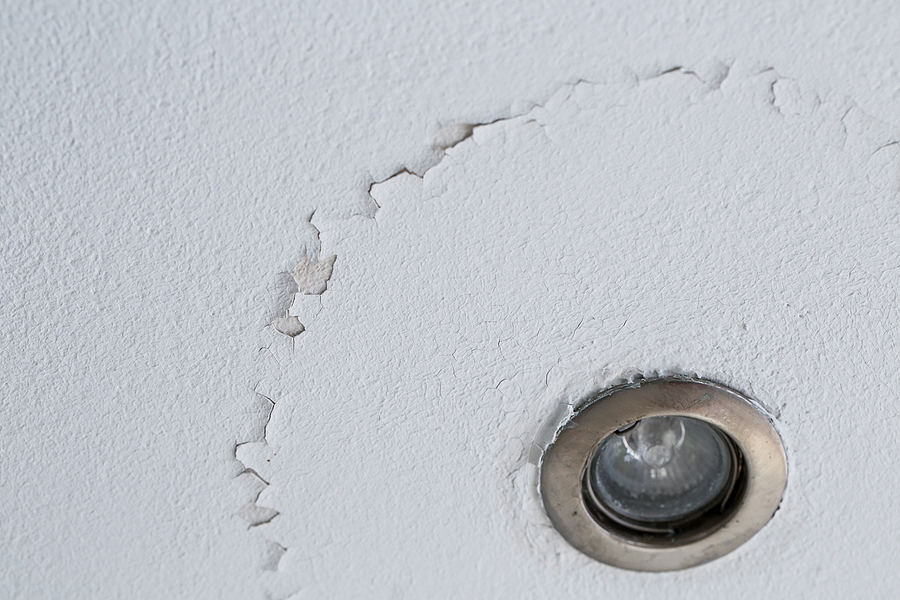When you spot a crack in the ceiling in your commercial building or office, you might feel a sense of panic. After all, your bottom line is always at the top of your mind. Your queries might mimic questions like, “What could this crack mean? Is there a serious underlying matter causing this crack? Is my property going to require a tedious renovation? How much is this going to cost me?” But before you fear the worst, keep in mind that not all ceiling cracks are serious. In fact, some are merely cosmetic. For this reason, a little knowledge goes a long way, especially when it comes to peace of mind.
Continue reading to learn 3 of the most common types of commercial ceiling cracks, what they might be telling you, and where to get trusted commercial general contracting service to resolve your structural problems.

Top 3 Most Common Commercial Ceiling Cracks
Thin Straight Cracks
If you discover a fine, straight crack in your ceiling, it is often an indication of poor joint taping. Basically, whoever did the framing work for the building did not use a sufficient amount of drywall mud during the taping step of the project. As a result, the tape did not adhere well enough to the joint. This creates a crack along the edge of the slackened tape. The good news is that this is entirely superficial, so there is no need for immediate repair. If you do mind the cosmetic defect, you can apply a thin layer of drywall compound under the loose tape and re-securing it to the drywall.
Tiny Spider Web Cracks
When you have tiny, web-like cracking in your ceiling, it is likely another superficial defect. Such cracks generally occur as a result of insufficient drywall compound when creating a textured ceiling. In contrast, if the cracks are more like a starburst, or go outward in multiple directions, it is likely a result of using too much drywall compound to create a textured ceiling. This is because compound shrinks as it is drying. To fix this problem, you can simply cover the blemish with more drywall compound, but this may require some sanding and priming first.
Discolored Cracks
When you spot yellowish brown stained cracks in the ceiling, it is not a good sign. Not only could discolored cracking be a sign of a water leak, but it could also pose serious structural hazards. In this case, you would need emergency commercial property inspection services to confirm the cause of the leak. Once you have determined what has caused the leak, you will need to have that problem repaired before you can refinish the drywall and ceiling.
Regardless of the types of cracks you have in your ceiling, it is important to have them inspected as soon as possible in case the problem is a water leak or structural issue. Try to have your inspection scheduled within 3 to 5 days to be safe. Be sure to choose a licensed, bonded, and insured Indiana commercial general contractor for trusted repairs and renovations.
Are you ready to remodel or renovate your commercial property and start fresh with a clean and well-designed space? Contact BAF Corporation at 317-253-0531 for professional commercial general contracting services in Indianapolis, Indiana. We serve commercial and industrial clients all throughout Central Indiana.
Related Posts:
General Tenant Improvements for Commercial Properties
Will a Remodel Improve My Business?
Tips for Keeping Your Business Open During a Remodel
